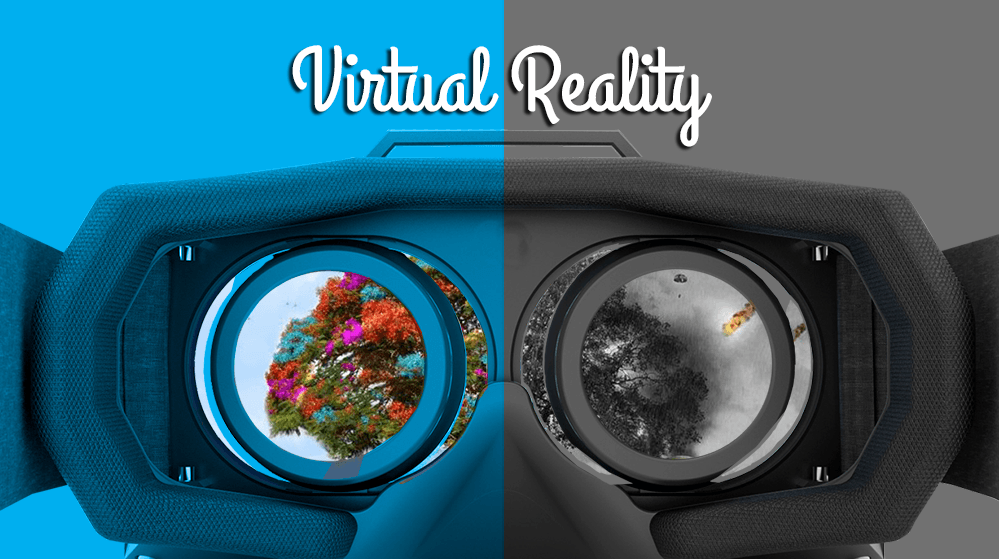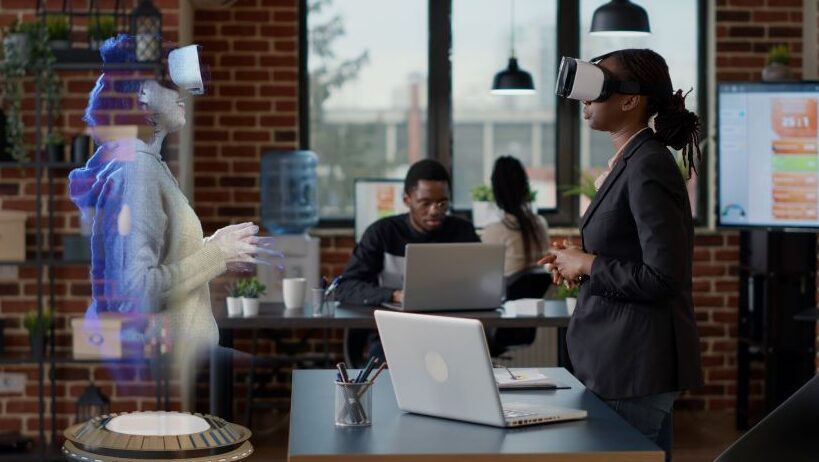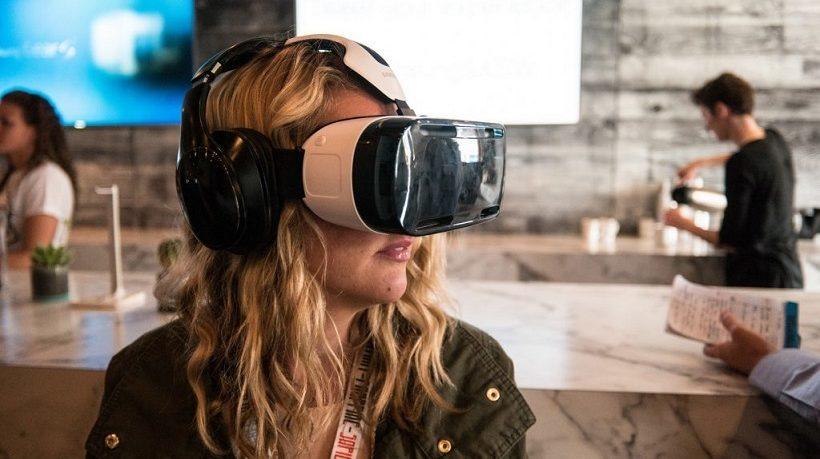Why Virtual Reality May End Up Being A Flop
I suppose some Abraham Maslow fans might frown disparagingly if I posited, as a variant to his definition on self-actualisation, that “what technology can be, it must be”; but then again, such a statement might meet with an (un)approving glint in the eyes of those who suspect that the nefarious or uninformed intentions of our technology decision-makers will unavoidably lead to an all-powerful AI metrics “thing” monitoring its helpless population of chipped and tracked (useful) human slaves.
“That introduction was overly conspiracy-theory,” I say to myself.
So from a different coign of vantage, basically, I would like to say that I am more interested in why things fail than in why things succeed. Whether it’s a lesson, business, relationship, debt-based monetary system or cutting edge technology, failure is far more intriguing than success. Moreover, and more interestingly, as it seems most people (by nature) don't relish listening to something that contradicts their firmly held beliefs, in the “human” world, many things fail. It is also regrettable that experiencing failure in many cases doesn’t lead to reflection immediately, and so an impetus is not given to the construction of a more sophisticated solution for a particular problem. One might therefore ask, and quite reasonably, why most humans are so surprisingly good at putting up, and for longer than one might expect, with bad things that are destined to fail; the answer is, I don’t know, but thankfully, there’s usually a harrowing awakening tipping point that drives change. For example, will better global awareness of nutrition lead to the possible bankruptcy of McDonald’s?
“But what do I believe about virtual reality specifically?” I ask myself.
I believe virtual reality will eventually be seen to be a bad error of judgement, and so for me it’s also interesting to think about what might ultimately replace it.
Why Do I Believe This?
Technologies that succeed, succeed because they cater, by accident or by design, effectively for the needs of their human users. Even though technology advancement is unrelenting, our understanding of whom we are as human technology consumers is not evolving in tandem. On a cline, we’re actually thoroughly disappointing to utterly amazing; we’re unique at a granular level yet strangely similar at a macro needs’ level. When we learn from one another authentically, many valuable, intimate, and intricate subliminal learning events take place which may activate, for example, greater levels of motivation, self-esteem, critical thinking, emotional development, or compassion for others in society. We don’t just need our senses and kinetic bodies to learn, we need a mind and a heart. We’re a culturally-bound enigma that lacks self-understanding; we’re living in an insane, hierarchical, and resource-squabbling world too. We have the potential to destroy ourselves, yet we also have the potential to unleash/unharness a tidal wave of supreme human creativity which could propel us to the stars (boldly). And, technology is supposed to be bringing us closer, but sadly it appears to be pulling us apart.
“But explain why virtual reality will fail,” I ask myself.
First, I need to describe how I keep abreast of developments in virtual reality. There is actually a glut of up-to-date virtual reality reading content out there: just look at emancipating, transparent and personalisable / just-for-me-access platforms such as Flipboard or Pinterest if you need convincing. Increasingly, as consumers of written content, we are source-overloaded and perpetually distracted. One might even assert that an unintended consequence of the act of being overwhelmed by the insurmountable task of trying to evaluate illimitable content may actually be the stifling of more important creative thinking. In this article I therefore have attempted to place the need to present my thoughts (creative or not) before digital virtual reality content curation.
So What Are The Key Virtual Reality Trends?
Talk to gamers first: most seem excited by its future capabilities.
“But that’s too anecdotal, be more scientific!” I tell myself.
Well, there's been an explosion of interest in virtual reality; the main areas of growth are gaming, improved social networking capabilities, entertainment, research, education, work-related and marketing. I've therefore been reading a lot about virtual reality recently.
I’ve read, for instance, that the pricing and release dates of those outlandish-looking head mounted displays (HMDs) are not too clear, and as a result, the sedentary gaming community faces an onerous choice in 2016, i.e. discombobulated gamers have to decide which HMD is the best to buy; Oculus Rift (Facebook-owned), Sony PlayStation 5 VR, Samsung Gear VR, or HTC Vive are four hopeful contenders. I’ve also read that the streaming of “everyone-has-the-best-seat-in-the-house” live events, such as concerts, computer games, or sports, is “at least on paper” apparently a good idea to scale; virtual reality porn, on the other hand, seems to be booming. I’ve read Carl Zeiss AG thinks streaming from drones live is commercially viable, and I’ve read the New York Times is so enamoured with virtual reality that they are even planning to ship out Google Cardboard to over a million (to-be-possibly-bewildered) print subscribers. I’ve read that the Netflix developed app “allows wearers of the Samsung Gear VR headset to step into the Netflix Living Room and watch movies and TV shows in VR”. But, if I tried to do that, I’m sure my head would be spinning after a few minutes.
I’ve read about the snazzy Danish-company virtual reality suit and I’ve read that virtual reality is being used in medical research and mental health therapeutic application (by the way, isn't that an oxymoron?). I’ve read about the potentially lucrative German neuroscientists’ Alzheimer’s disease research, and I’ve also read that virtual reality is being tried as a way to help people with disabilities explore the world that might be difficult or impossible in real life. I’ve read about virtual reality employee training programmes and I’ve read that Deutsche Bahn “is experimenting with three-dimensional virtual reality films that give potential employees the chance to experience different jobs on offer before they apply”. I’ve read that publishers like Square Enix and Wargaming strangely “aren’t creating VR games, but they’re using the medium to market games”.
But most interestingly, I’ve read that Oculus is making a point of flagging games with “locomotion” (Nota Bene virtual reality motion sickness) in their Oculus Home store, and I’ve read Sean Sullivan who notes, citing a virtual reality study on rats, that two senses (i.e. sight and sound) are not enough to trick the brain, “brain mapping may rely on tricking all five”.
Here’s Why I Think Virtual Reality Will Fail
The foremost issue and worry for me about virtual reality is not whether the industry will get traction or collapse in light of the huge developmental costs. It’s not the potential motion sickness, (dis)comfort of the headset, or all that electronic stuff so close to the brain. For me, it’s the brazen attempt to hijack the brain itself with, quite frankly, a freaky looking contraption placed over our irreplaceable eyes. Also, virtual reality doesn’t, or rather can never, work the way our senses, body, and brain have been designed to work, i.e. the world we see naturally (on this spinning planet) doesn’t move when our body moves; in virtual reality, to move what we see (i.e. the virtual world), we have to move our body/head. There is a perilous difference here that must surely be puzzling and detrimental for our brains. [N.B. for more on this, read the footnote points below].
The war is therefore on to deceive the brain, through our eyes and ears for the time being. Virtual reality is one of the weapons of attack, though, who knows, maybe in the future, transcranial or smart eyeball replacement :) weapons will be developed too. Sadly, the history of mankind is replete with examples of bad ideas. For me, virtual reality is saying “Look at me! (Twerkily) What more do you need?” It beguiles you into a world of shallowness and, like a drug, it’s giving you a harmful high.
Our sensuous perception of our actual reality is undoubtedly not flawless, and we may even be part of a perfect matrix reality. However, we’ve been designed body and soul to participate in this galaxies-to-quarks reality, whether we like it or not. The thing that brings value to something for humans is collective trust in a thing, and as we collectively appear to believe what we see in the physical world is real, maybe we should not try to replace that with something that is not. So when I think about virtual reality, I tend to say “take a hike”, i.e. meaning humorously, it should (eventually) go away and I should also (eventually) go for a walk in the mountains to enjoy the reality I’ve actually been designed to see.
So maybe, referring loosely to Maslowian self-actualisation again, “technology can only be what we as humans must be”, or put another way, technology should not try to unwire the hard-wiring we have as humans.
FOOTNOTES
Kemeny, Colombet, and Denoual (2015) hold that:
Driving simulation (DS) and Virtual Reality (VR) technologies use the very same characteristics for visualization and may use similar technologies for head movement tracking and high end 3D vision. They also share similar difficulties in rendering movements of the observer in the virtual environments. The visual-vestibular conflict, due to the discrepancies perceived by the human visual and vestibular systems, induce the so-called simulation sickness in DS or cyber sickness in VR, when driving or displacing using a control device (ex. Joystick). Another cause for simulation sickness is the transport delay, the delay between the action and the corresponding rendering cues.
A. Kemeny ; F. Colombet and T. Denoual "How to avoid simulation sickness in virtual environments during user displacement", Proc. SPIE 9392, The Engineering Reality of Virtual Reality 2015, 939206 (March 30, 2015); doi:10.1117/12.2077080; http://dx.doi.org/10.1117/12.2077080
Charara (2015) states that
Head-tracking tech needs low latency to be effective - we're talking 50ms or less or we will detect the lag between when we turn our head and when the VR environment changes. The Oculus Rift has a minimized lag of just 30 milliseconds. Lag can also be a problem for any motion tracking inputs such as PS Move-style controllers that measure our hand and arm movements.
Charara, S.(2015) Explained: How does VR actually work? Retrieved from http://www.wareable.com/vr/how-does-vr-work-explained









